The Mangrove Crab, known as “cum num” in Vietnamese, is a unique crustacean species found along the coastal areas of Vietnam, particularly in Quang Ngai Province. It resembles both a crab and a shrimp, with eight legs, two claws, and a flat, short body.
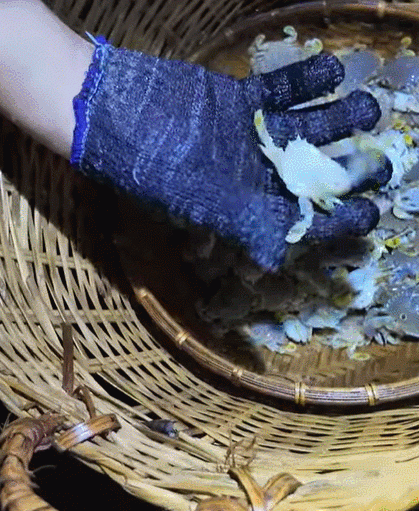
While cum num can be found in various Vietnamese coastal regions, it is most prevalent in Quang Ngai. Photo: Bep Ben Suoi Doi
Cum num is a burrowing crab that inhabits the seafloor and washes up on shore during its breeding season. It has a hard shell, typically green or yellowish with tiny speckles. Its underside is a creamy white, while its claws and legs are a pale yellow.
Minh Du, a local fisherman from Phu Duc district in Quang Ngai, shared that the best time to catch cum num is during the seventh and eighth lunar months. This is when the crabs are at their peak growth, resulting in firmer, sweeter meat and an abundance of rich, flavorful roe.
To catch cum num, locals often set bait in shallow waters and use nets to scoop them up as they feed. The bait is usually fish, preferably something strong-smelling like mackerel or anchovy. The crabs are attracted to the scent and will come looking for a meal.
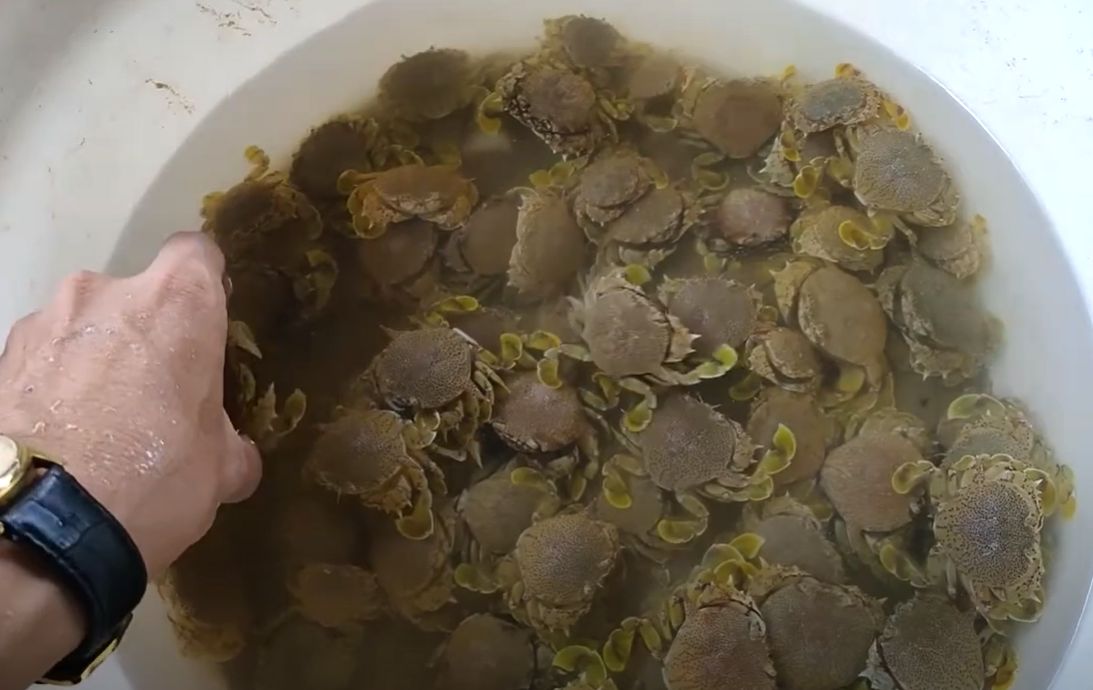

Cum num is relatively small, slightly larger than a freshwater crab, about the size of two finger widths. Photo: The Linh
Another simple method is to walk along the beach and scoop up the crabs as they wash up with the waves. They are often found near floating carcasses, as they scavenge for food.
“When the tide recedes, the cum num will quickly burrow into the sand, hiding their bodies,” shared Du. “Experienced locals can spot these hidden crabs by looking for unusual sand patterns. With a bit of luck, one can easily catch 3-5kg of cum num in a few hours.”
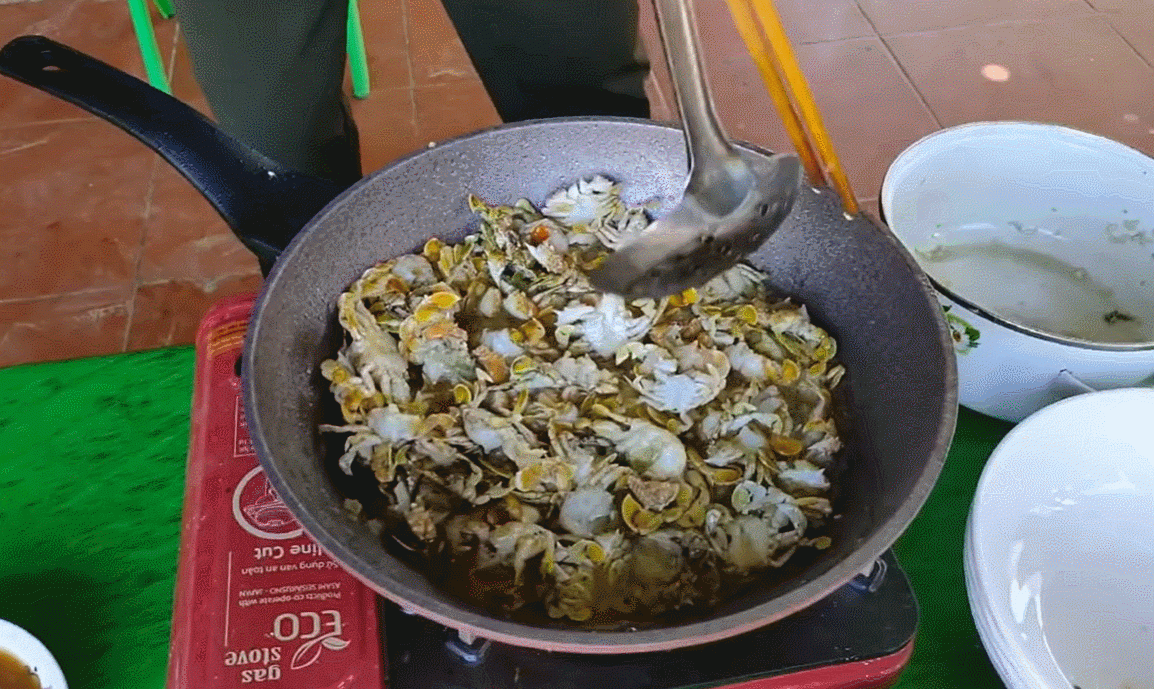
Cum num stir-fried with tamarind is a delicacy in Quang Ngai. Photo: The Linh
According to Du, cum num can be prepared in various ways, similar to crab. It can be steamed with lemongrass, made into a soup, or used for crab noodle soup (bun rieu). However, the most popular and mouthwatering dish is stir-fried cum num with tamarind.
This dish is a favorite among locals and tourists visiting Quang Ngai. To prepare it, the crabs are cleaned, their shells removed, and their claws and legs separated. The bodies are then stir-fried in fat or oil until they turn reddish-orange, after which they are set aside.
Next, aromatics like shallots, garlic, and lemongrass are sauteed, and spices are added to taste. The crabs are then tossed in, and after a few minutes, tamarind paste is added to the mix.
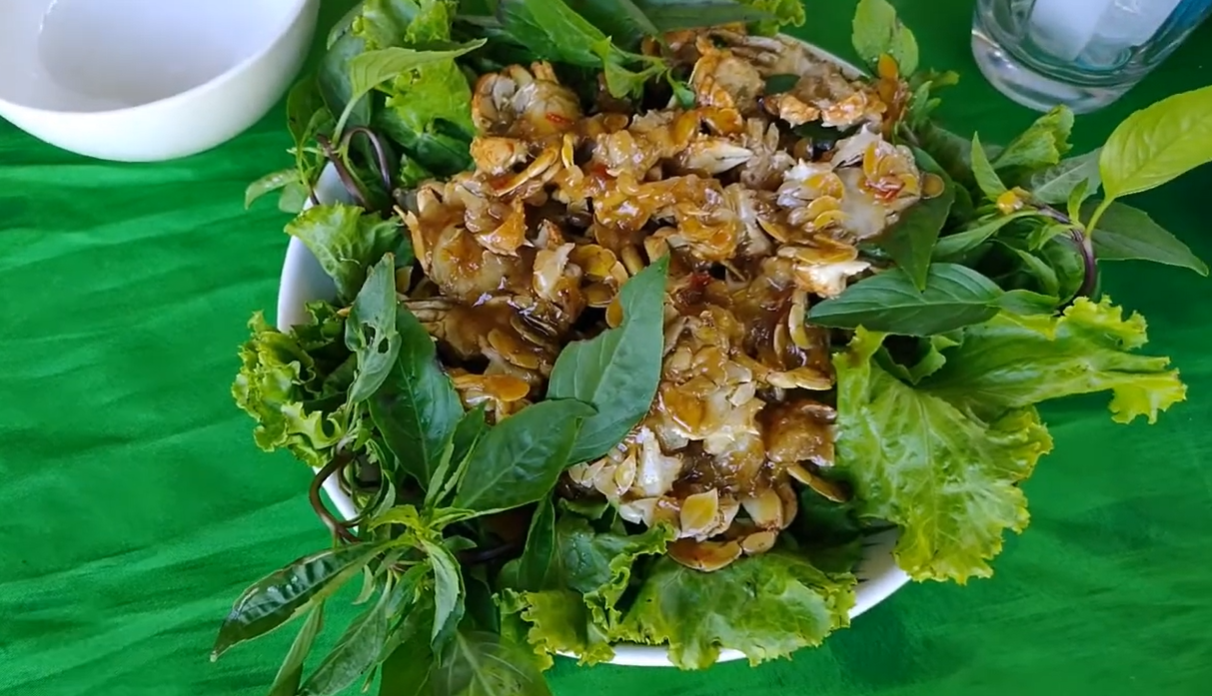
Cum num has firm, sweet meat that rivals that of shrimp and crab. Photo: The Linh
This step requires constant stirring to ensure even cooking and prevent burning. The resulting dish is a crispy, crunchy delight with a tangy, spicy, sweet, and savory flavor profile.
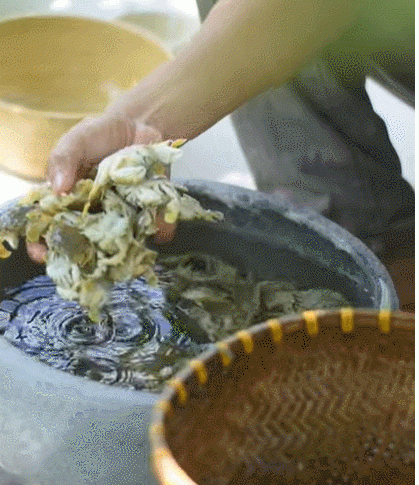
Cum num can also be prepared like crab soup or crab noodle soup, resulting in a rich and flavorful dish. Photo: Bep Ben Suoi Doi
Du noted that while cum num may not have as much meat as shrimp or crab, its meat is firmer and richer. Additionally, the roe found in the crab’s shell is a golden delicacy with a distinctive aroma.
“Cum num can also be used for crab soup or crab noodle soup because of its rich roe, adding natural sweetness and an appealing look to the dish,” Du shared. “For a simpler preparation, steam the cum num with lemongrass and chili, and serve it with a dip made of salt, pepper, and lime.”
In Quang Ngai, cum num dishes have made their way into the menus of seaside restaurants and eateries, typically priced at VND 70,000-100,000 per dish, sufficient for 2-3 people to enjoy.
Exploring Tam Giang – The Largest Brackish Lagoon in Southeast Asia
The imperial city of Hue boasts a diverse range of attractions beyond its famous monuments and tombs. One such attraction is the Tam Giang – Cau Hai lagoon system, a unique tourism product that has been captivating visitors for years. With the largest network of brackish water lagoons in Southeast Asia, this destination offers a distinct and captivating experience.






































